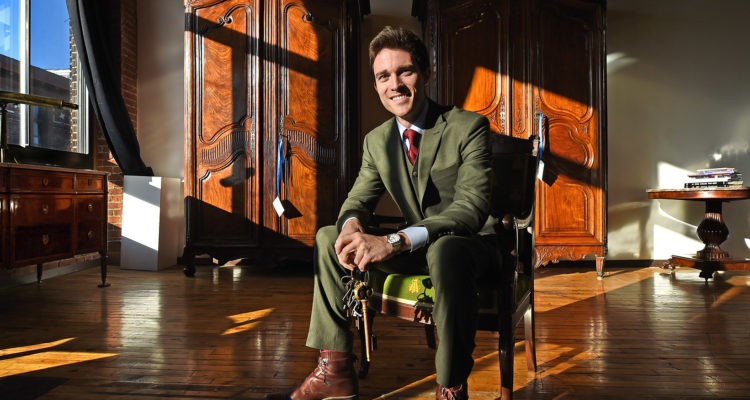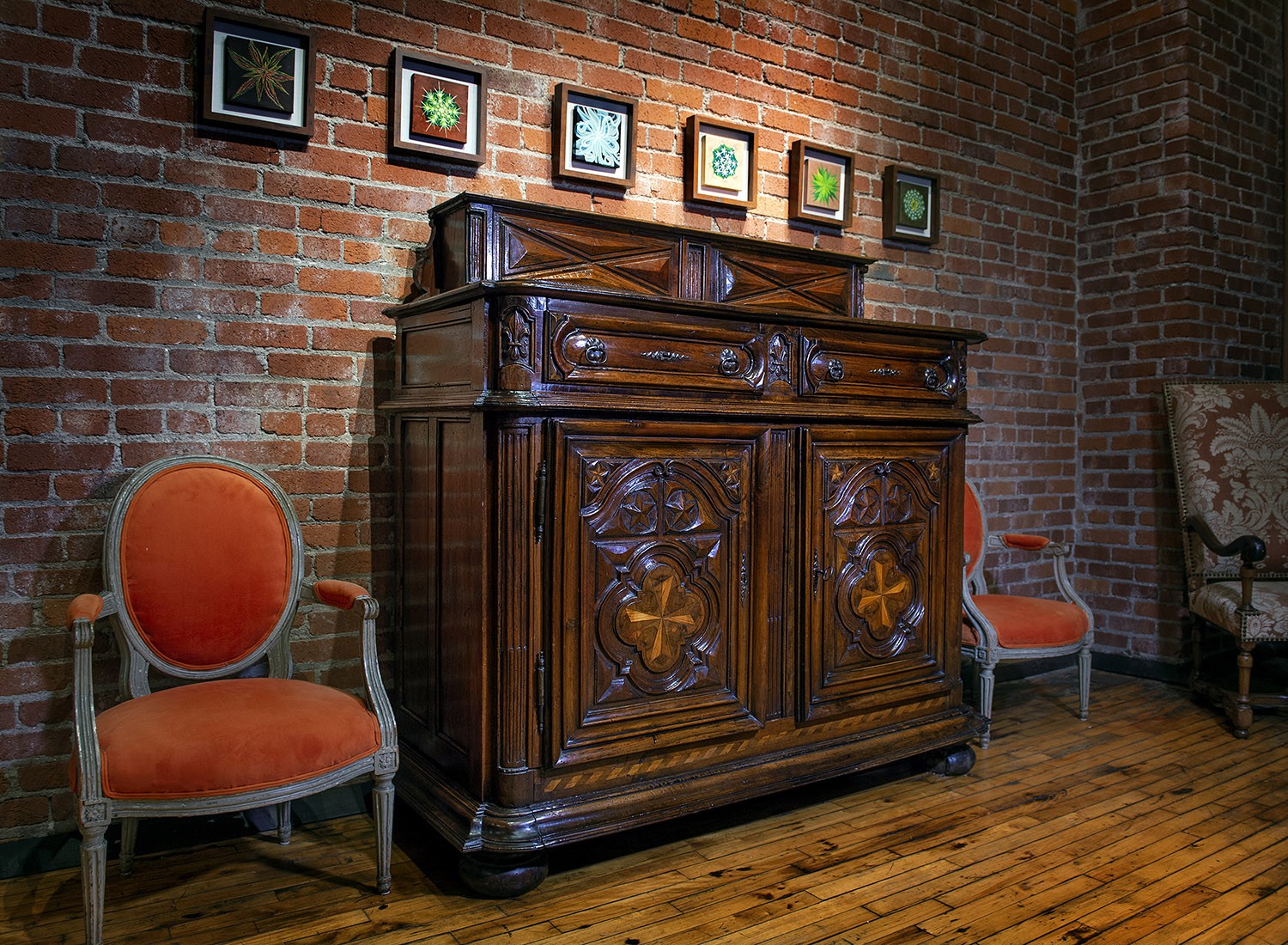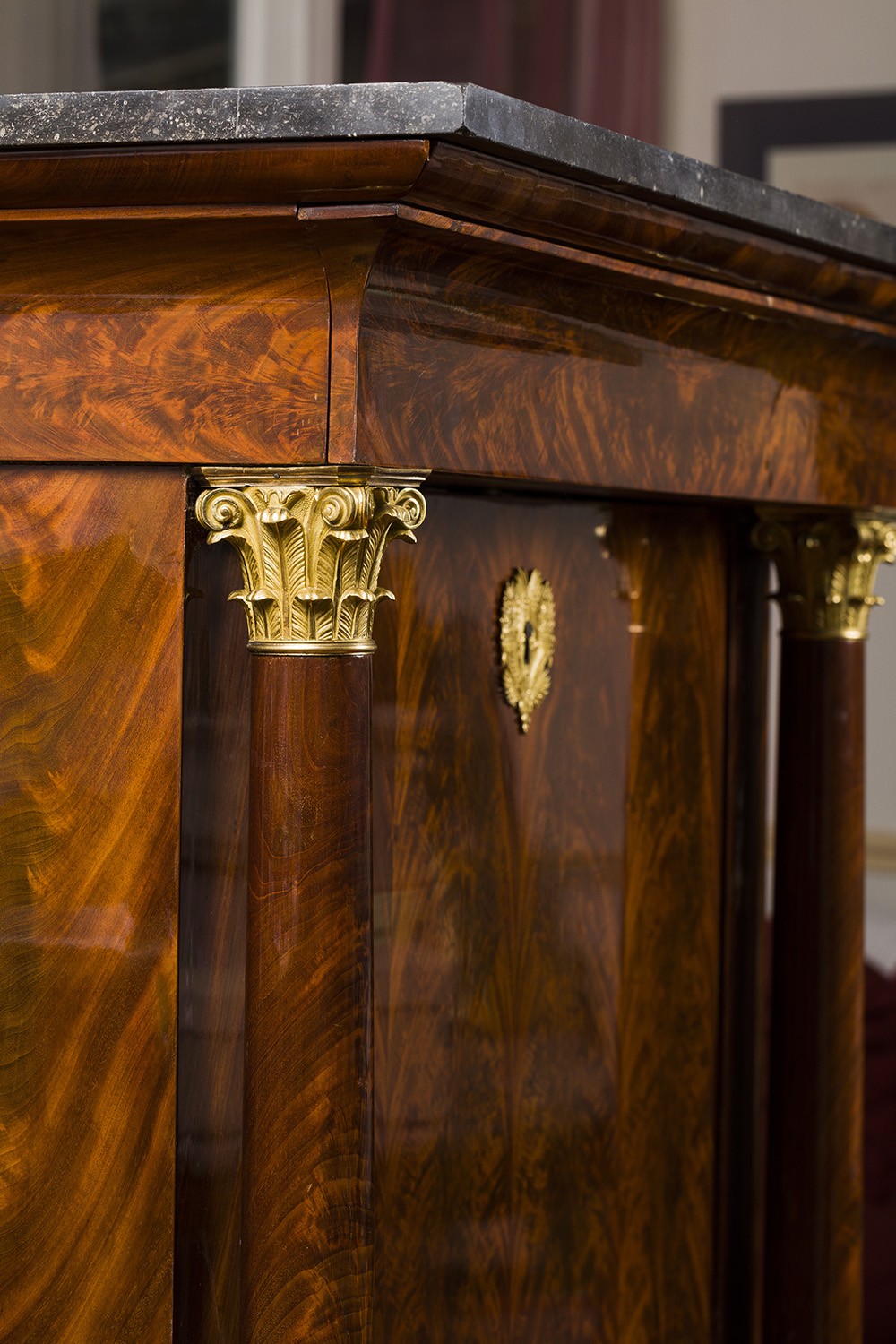More than just antique furniture, French period pieces are born of the highest quality and crafted by some of the most skilled tradespeople of the ages.
Story by Ann Butenas
Throughout the ages, life has been built around furniture. Furniture symbolizes stability and permanence in the human story and has been crafted and designed for many purposes: to hold things; to store things; to allow for seating and lounging; and sometimes, to present as a decorative works of art. French antique furniture stands out as a highly popular European antique furniture style, and for good reason. Some of the most breath-taking pieces were created in France, showcasing what some might deem the quintessential blend of craftsmanship, beauty and function.
One young professional in Kansas City has a deep appreciation for furniture that not only stands as an historic representation of the time periods from which they hail, but also for the stories that give them the foundation upon which they stand. Cole Myers, 27, owner of Myers & Monroe in the Bredin-Lee Gallery in the Crossroads Art District, is just a couple of years into his endeavor of displaying and selling exquisite period furniture, but has the savvy, insight, knowledge, wisdom, experience and understanding of an industry that extends way beyond his years. He is a veritable old soul of the trade and seemed destined to be a part of it from the beginning.
When Myers was a young boy, he would spend hours exploring and entertaining himself when he visited his great-grandparents at their 19th century home in Platte County, Missouri. This storied home, which is still in the family, is a living museum, with an enviable treasure chest of artifacts from days gone by, such as an old horse buggy and a Model T Ford. In some respects, it is almost as if time stopped here and said, “Hey! We still matter! Listen to what we have to say.”
And listen Myers, did.
“There was 100 years of stuff in that house, and you never knew what you’d find in closets or other areas,” he recalled. Those carefree days of exploration as a youth, coupled with summer trips to France with a friend when he was in high school staying in old family homes and “running amok in castles,” served to whet his growing appetite for the more exquisite decorative arts.
Education Opens the Door to Understanding
Myers moved to Paris in 2013 to attend the Paris Institute of Political Science. Fluent in French, he dedicated his free time to learning all he could about museum and private collections throughout all of France. He deepened these pursuits full time in 2017-2018, through extensive reading and hands on experience with hundreds of pieces from the most interesting periods. Additionally, he consults with experts in the field and other collectors to confirm his determination for authenticity with respect to each piece he curates. Why? Because Myers feels the need to stand out in the market and is committed to providing clients with a piece of history as well as a functional work of art to inspire and enrich their lives.

An 1834 mechanical desk, by a master furniture maker who worked for the last French king, is the centerpiece of Cole Myers’s newly imported collection of French period furniture. The pieces, co-curated with textile artist Debbie Barrett-Jones and flowers by Botanical Floral Designs, are available by appointment at the Bredin-Lee Gallery, 1729 McGee Street.
Antiques vs. Period Furniture: Know the Difference
Myers explained that, legally speaking, antique furniture are pieces that are 100 years old or older. Period pieces, however, generally come from a pre-industrial time and were made by hand or made in a much more artisanal fashion by one or more workers.
“Post-1840, furniture becomes more of a product of the assembly line,” he noted. “While some of the pieces might have had carvings on them, they were most likely created with the assistance of a machine. The key is that post-1840 we generally encounter products that imitate works of art, and pre-1840 the products are works of art.”
Myers explained then, with with respect to the furniture he procures, he looks for quality and beauty. In his collections, he uniquely showcases the original period styles from 1650 to 1840.
“There are 10 styles in there that approximately corresponded with the reign of each monarch,” he noted. “If you line the pieces up chronologically, you can see aspirations of each period and transition of styles. Most pieces have never left France before and some have never even left the family from which they came.”
Because of their aesthetic appeal combined with the express attention to function, these pieces are known to command premium prices. They were made by hand by masters with specific intention to be both beautiful and stunning. Myers finds these pieces to produce quite a contrast in today’s more modern settings.
“It is interesting to see the contrast when these pieces are placed in a modern, sterile space today, as they are highly ornamental against something like a white wall in an industrial loft. It demonstrates the weight of history with contemporary flair,” he indicated.
Criteria for Consideration Into His Gallery
Myers is quite selective about what he brings to his gallery to showcase to potential buyers. In order for each piece to become a showcase item, it must pass a rather rigorous inspection, which also includes expert certification.
“When I look at this object, I first have to ask if it is inspirational and determine if it is a work of art as intended to be when it was made,” he commented, referring to any piece of antique French furniture he encounters and considers to become a part of his collection.
Myers understands clients have to trust the dealer with such an important purchase. If he is acquiring a piece, he must determine if it is genuinely from the period in question, and if that checks out, then he continues with his inspection.
“It’s a mix of science and logic,” he emphasized. He understands how these pieces are made, how they should look, under what circumstances they should surface on the market today, and his job is to identify, safely transport, and document genuine artifacts. “These pieces appeal not only to those who are art collectors but also to some who have a habit of buying expensive design furniture but later discover they have bought a work or art.”
His studies and rigorous sourcing must have paid off, as one painting from his first collection imported to Kansas City in 2018 was just shipped back to France, sold to one of the country’s National Museums: the Orléans Museum of Fine Arts.








